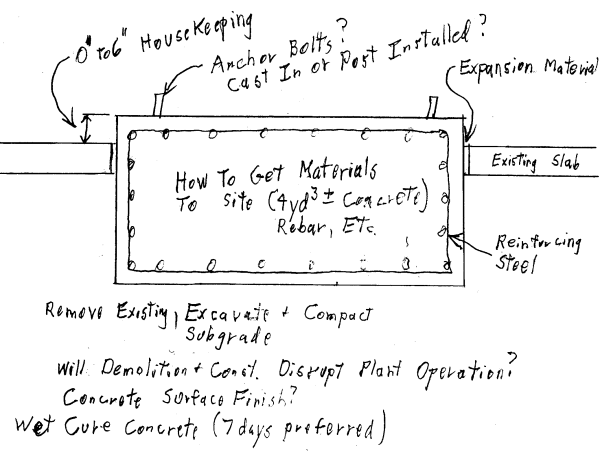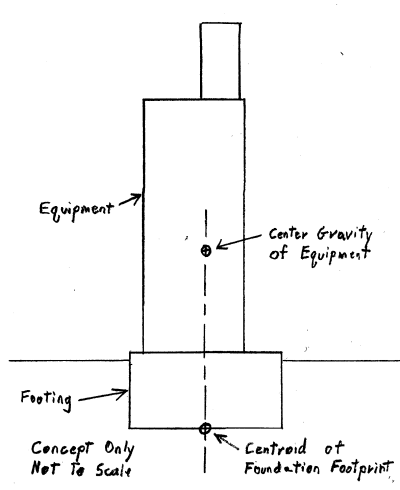ThatShouldHaveWorked
Electrical
I've had a project to relocate several pieces of equipment in one of our plants assigned to me. I have the various utilities covered. However these machines are going to require thicker slabs under them. So far the best I've been able to get out of corporate is cut the existing out and pour deeper one in it's place. I know next to nothing about concrete.
The specs I have from the OEM are.
Operating weight - 15,300 Kg
Static point load at foot 0.94 N/mm2
Dynamic point load - 15 kN
Excitation frequency of the dynamic point load <0.01 Hz
Number of feet - 4
Surface of individual foot 40,000 mm2
I don't mind doing the homework but I have no idea where to start.
Any help will be greatly appreciated
The specs I have from the OEM are.
Operating weight - 15,300 Kg
Static point load at foot 0.94 N/mm2
Dynamic point load - 15 kN
Excitation frequency of the dynamic point load <0.01 Hz
Number of feet - 4
Surface of individual foot 40,000 mm2
I don't mind doing the homework but I have no idea where to start.
Any help will be greatly appreciated

![[cheers] [cheers] [cheers]](/data/assets/smilies/cheers.gif)


![[ponder] [ponder] [ponder]](/data/assets/smilies/ponder.gif)